The brightest planets in August's night sky: How to see them (and when)
Many of the most popular planets for skywatching begin reappearing in the night sky throughout August.
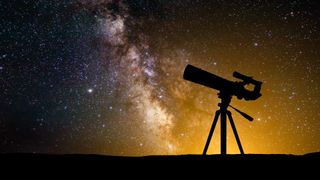
The most brilliant planet continues to wallow in the sun's bright evening glow. Venus is visible — but with difficulty — low to the west-northwest horizon less than a half-hour after sundown. Binoculars will help you pick it out against the bright background sky and you'll need them to help locate the bright star Regulus, which will be near Venus on Aug.4 and a skinny waxing crescent moon on the following evening.
Although it does not "stand out" like Venus or Jupiter, Saturn is quite noticeable during the late-evening and overnight hours, shining as a solitary, bright yellowish-white "star" against the rather dim stars of Aquarius.
During the predawn hours, Jupiter and Mars put on an ever-changing show, with Mars creeping toward Jupiter during the first half of the month, then passing it on the morning of Aug. 14, and then slowly moving away from the big planet during the rest of the month; all augmented by the background stars of Taurus the Bull and its famous star clusters, the Hyades and Pleiades.
Finally, there is little Mercury which transitions from the evening to the morning sky at midmonth and is favorably placed for viewing by month's end, low in the east-northeast sky shortly before sunup.
Related: Night sky, August 2024: What you can see tonight [maps]
Read more: Best telescopes for seeing planets in 2024

Looking for a telescope to see the planets in June? We recommend the Celestron Astro Fi 102 as the top pick in our best beginner's telescope guide.
In our schedule, remember that when measuring the angular separation between two celestial objects, your clenched fist held at arm's length measures roughly 10 degrees. Here, we present a schedule below which provides some of the best planet viewing times as well directing you as to where to look to see them.
Be sure to check out our best telescopes for viewing planets guide and our more general guides for the best binoculars and the best telescopes. If you're interested in taking your own impressive skywatching images, we have recommendations for the best cameras for astrophotography and the best lenses for astrophotography.
Mercury
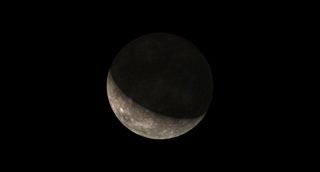
Mercury is at inferior conjunction with the sun on Aug. 18. By Aug. 29 it will rise 1.5 hours before sunup. Using binoculars, search for the +1.3-magnitude planet close to the horizon, a little north of due east. Getting higher and brighter each morning, by Sept. 1, Mercury will be an easy naked-eye object when it sits 4 degrees to the lower right of a very thin crescent moon.
Venus
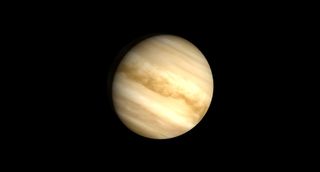
Venus has a dazzling magnitude of -3.9 but looks much fainter because of its very low altitude and surrounding bright twilight; bring binoculars because it's only about 4 degrees high even just 20 minutes after the sun goes down as seen from latitude 40 degrees north.
It appears significantly higher in the sky for people at southerly latitudes. For instance, Venus appears nearly twice as high above the west-northwest horizon at dusk seen from Miami as it does from New York City. The real challenge on the evening of Aug. 4 is also sighting the 1st-magnitude star Regulus, sitting 1 degree to the lower left of Venus. But this star shines only 1/126 as bright as Venus.
The following evening brings another difficult sighting, as Venus is visited by a hairline-thin (2% illuminated) waxing crescent moon, which will appear just three-quarters of a degree to the upper right of our brilliant evening star.
Venus starts August setting 45 minutes after the sun, but this improves only an additional 15 minutes by the end of the month.
Mars
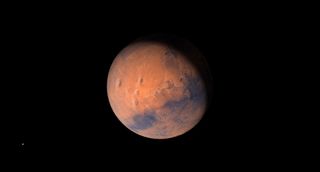
Mars appears as an extra 1st-magnitude "star" in Taurus, well up in the east as morning twilight begins. On Aug. 1 Mars lies 5.5 degrees north of the similarly bright and orange-hued star Aldebaran and 6.6 degrees west (upper right) of Jupiter.
Watch Mars approach Jupiter during the first half of this month. They appear within 5 degrees of each other between Aug. 4 and Aug. 24 and will engage in a rather tight conjunction on Aug. 14.
On the morning of Aug. 27, the moon, just past the last quarter phase, forms a broad right triangle configuration with Jupiter and Mars. Jupiter is 5 degrees below the moon, while Mars will be 9 degrees to the moon's lower left.
Jupiter
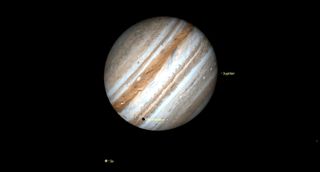
Jupiter comes up at around a quarter to two in the morning. (daylight-saving time) as August begins, and around midnight at month's end. Jupiter brightens marginally, from magnitude -2.1 to -2.3, while inching slowly away from Aldebaran and the Hyades in Taurus.
The best time for telescopic views of Jupiter this month is early in the morning twilight when the planet is 30 to 50 degrees high in the eastern sky. Jupiter and Mars can be viewed in the same medium-power telescope field on the morning of Aug. 14 as they will be separated by only 20 arc minutes (0.33-degree).
Compare the relatively tiny disk of Mars with that of Jupiter's, which will appear some six times wider. Mars' rapid motion carries it 8 degrees east of Jupiter by Aug. 31.
Saturn
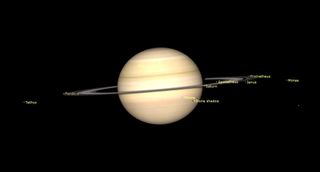
Saturn rises in evening twilight; look for it glowing low in the east-southeast after dark. On the evening of Aug. 20, it will be positioned only half a degree to the upper left of the moon.
By late evening Saturn is considerably high for good telescopic observing — a bright, sedate point of light poised against the dim stars of Aquarius the Water Carrier. It doesn't transit the meridian until well after midnight local daylight-saving time. Saturn's opposition comes on the night of Sept. 8.
Joe Rao serves as an instructor and guest lecturer at New York's Hayden Planetarium. He writes about astronomy for Natural History magazine, the Farmers' Almanac and other publications.
Editor's Note: If you get a great photo of any of the planets and would like to share it with Space.com's readers, send your photo(s), comments, and your name and location to spacephotos@space.com.
Join our Space Forums to keep talking space on the latest missions, night sky and more! And if you have a news tip, correction or comment, let us know at: community@space.com.
Get the Space.com Newsletter
Breaking space news, the latest updates on rocket launches, skywatching events and more!

Joe Rao is Space.com's skywatching columnist, as well as a veteran meteorologist and eclipse chaser who also serves as an instructor and guest lecturer at New York's Hayden Planetarium. He writes about astronomy for Natural History magazine, the Farmers' Almanac and other publications. Joe is an 8-time Emmy-nominated meteorologist who served the Putnam Valley region of New York for over 21 years. You can find him on Twitter and YouTube tracking lunar and solar eclipses, meteor showers and more. To find out Joe's latest project, visit him on Twitter.
-
rod Good to see in the report Starry Night used for some charts. I use and enjoy very much in my stargazing as well as planet observations and asteroid tracking like 4 Vesta in Cetus now, moving retrograde. In my observation log (MS ACCESS DB), I load up views of the sky from Starry Night into my log entry along with various ephemeris generated that I import into Excel - works very well.Reply